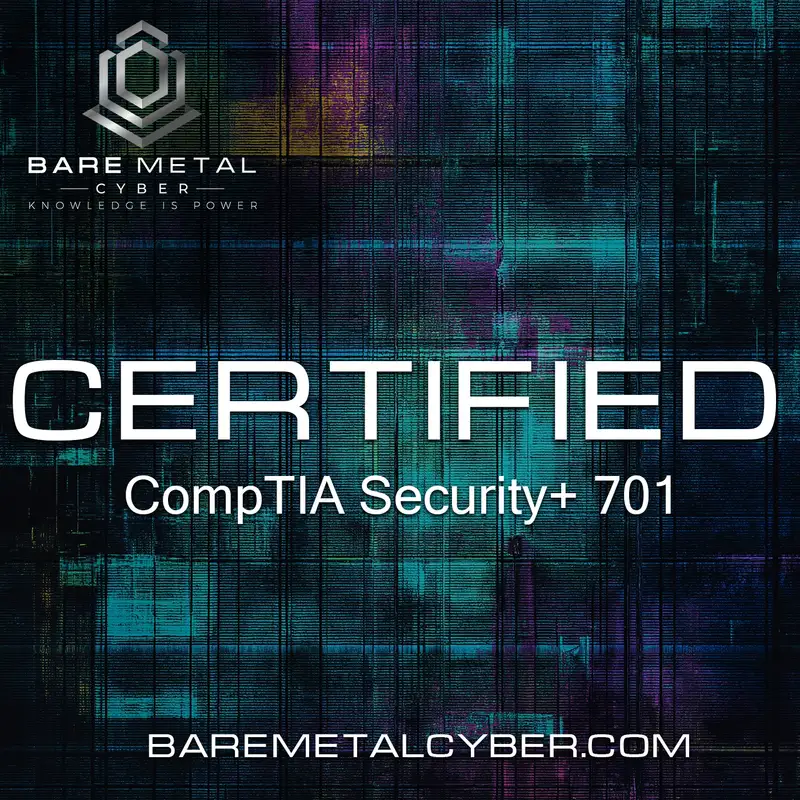Selecting Effective Security Controls (Domain 3)
In this episode, we’re talking about how to select and implement effective security controls. The goal of any security program is to reduce risk—but choosing the right controls requires strategy. You need to prioritize, layer defenses, and apply lessons from the real world. Today we’ll explore a risk-based approach to selecting controls, best practices for implementation, and case studies that illustrate how these principles come to life.
Let’s begin with a risk-based approach to control selection. Every organization faces unique risks based on its size, industry, data, and infrastructure. Rather than applying every possible control to every system, security teams must first assess where the greatest risks lie. A risk-based approach means analyzing threats, identifying vulnerabilities, evaluating impacts, and prioritizing controls based on the likelihood and severity of outcomes.
For example, if a healthcare provider identifies patient data as its most valuable asset, the focus might be on encrypting databases, enforcing access controls, and monitoring for insider threats. If a retail company relies on 24/7 point-of-sale systems, then availability and uptime may become the primary drivers, leading to investments in failover, monitoring, and anti-DDoS protection.
The results of a risk assessment help guide these choices. Controls are selected not based on guesswork or industry trends, but on real data—like threat intelligence, past incidents, and the organization’s risk tolerance. Decision frameworks such as the NIST Cybersecurity Framework or ISO 27001 can help translate assessment results into structured control recommendations.
Control selection must also consider the value of defense in depth. No single control is perfect, so the goal is to layer protections so that if one fails, others remain in place.
That leads us to best practices for control implementation. A layered defense, also called defense in depth, means applying multiple controls across different areas—network, endpoint, application, user behavior, and physical access. These layers should complement each other without creating unnecessary complexity.
For instance, to protect a sensitive database, you might combine access controls, encryption at rest, firewall segmentation, and user activity monitoring. Even if an attacker compromises one control—say, by stealing a user’s credentials—they still face encryption barriers, network restrictions, and detection systems.
Controls should also be chosen for both prevention and response. Firewalls, antivirus, and access restrictions prevent many threats. But detection and response tools—like SIEM platforms, endpoint detection and response, and audit logs—are essential when threats get through. No system is invulnerable, and controls that support recovery and forensics help ensure that incidents are contained quickly and lessons are captured.
Implementation should also emphasize consistency. Use templates, configuration management, and automation wherever possible. Manual processes are prone to errors, especially when rolling out complex controls across a large enterprise. Centralized policy enforcement, patch automation, and automated compliance checks are all ways to reduce misconfigurations and ensure reliable outcomes.
Now let’s look at a few real-world scenarios that illustrate how control selection works in practice.
In one case, a logistics company experienced a ransomware attack that shut down its shipment tracking system. After the incident, they conducted a risk assessment and discovered that their biggest vulnerability was a lack of email filtering and endpoint detection. They prioritized the deployment of advanced phishing defenses, trained staff in email hygiene, and implemented automated backups with rapid restore capability. The next time a phishing attempt occurred, the attachment was blocked, and the user reported it without incident.
In another example, a university suffered repeated unauthorized access to administrative systems. Investigation revealed that students were guessing staff login credentials using common passwords. The university responded by implementing multi-factor authentication, blocking repeated login attempts, and enforcing stronger password policies. These controls significantly reduced account compromises.
A third case involved a small financial firm that chose a cloud-based accounting platform to reduce infrastructure overhead. Their risk assessment focused on third-party access and data confidentiality. As a result, they selected a vendor with strong encryption, zero-trust authentication, and regulatory compliance certifications. They also retained responsibility for their own access controls and logging. This balance allowed them to manage their risk while benefiting from the provider’s built-in security features.
These stories highlight how control selection varies depending on the threat, the environment, and the organization’s priorities. Controls must be aligned to real-world conditions—not theoretical ideals. And once controls are in place, they must be monitored, tested, and improved based on evolving risks.
As you prepare for the Security Plus exam, understand that selecting controls starts with identifying what needs to be protected, what could go wrong, and how best to reduce the chance or impact of that outcome. Be ready to explain how layered security works, how to prioritize controls based on risk, and how frameworks like NIST or ISO help structure decision-making. You may be asked to analyze a scenario, select appropriate controls, or identify a gap in an existing defense strategy. Focus on risk reduction, coverage overlap, and operational practicality.

